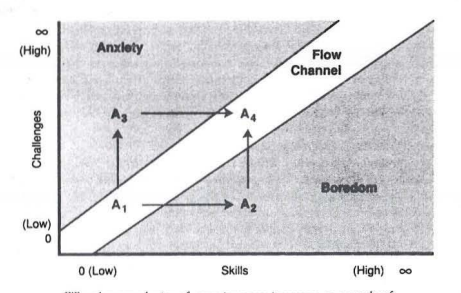The Leap Motion Controller doesn’t exist in a vacuum. Across fiction, gaming, and art, we can see a rich history of motion control concepts and devices, and understanding what makes them successful is hugely important to building the next generation of real-world interfaces.
How do fictional user interfaces influence #VR motion-controlled interactive design? Click To TweetIn this two-part video, we look at some of the most compelling interfaces in modern fiction – from Minority Report and Matrix Reloaded to The Avengers and Ender’s Game. Along the way, we’ll see how our love for motion controls is driven by visions of power and mastery. How to achieve immersion and flow so that time seems to stand still. And how these cultural expectations lie beneath today’s most popular motion-controlled games.
The first part of the video can be seen at the top of this post, while part two is below.
The TL;DW Guide to FUIs
Here’s what you need to know about fictional user interfaces (FUIs) and how they set the bar for motion control design.
Futuristic user interfaces aren’t always realistic, but the best ones reflect our innermost desires. Click To TweetPower and mastery. Fictional user interfaces aren’t always realistic, but the best ones reflect our innermost desires and create expectations on a cultural level. We want motion control to make us feel powerful and in control of our environment.
Immersion and flow. Human beings crave immersion and “flow,” where we feel a sense of exhilaration when our bodies or minds are stretched to their limits. Time stands still and we feel transported into a higher level of reality. But to sustain flow, our skills must meet proportionately complex challenges in a dynamic system. When we push our skills to meet each rising challenge, we achieve flow.

Immersion and anti-immersion. What happens when the interface meets the road? Developers and designers use motion controls for different things, and while immersion is often a major goal in gaming, sometimes it works and sometimes it doesn’t. As designers, we can play with many of these expectations to create new experiences. You can never ignore them, but you can subvert them.
Further Reading
- Introduction to motion control
- What sci-fi tells interaction designers about gestural interfaces
- Interview: Jayse Hansen (The Avengers)
- Mihaly Csikszentmihalyi @ TED: Flow, the secret to happiness
- Minority Report UI designer John Underkoffler talks about the future of gestures





Great blog post. I have noticed the issue of elbow and wrist pain from the over use of Leap Motion, and also the problem of “switching” to leap motion and then back to keyboard. I believe there should be a sort of balance between leap motion gestures and keyboard and mouse actions, in a seamless way that allows the user to use an interface he is already immersed in (regular keyboard and mouse) and add just a bit of air gestures in order to make this experience even more intuitive.
August 26, 2014 at 9:40 amTotally agree with you, Bshara. Not everything should be controlled by our hands or air gestures… I think the combination of interfaces is the real future (voice + gesture commands, etc.)
September 1, 2014 at 4:17 pmwhile fiction has a role – its 100% wrong to allow fiction to “set the bar”
The problem with fictional technology is that it is a plot device, in service to the narrative (not any sense of HCI), so mastery, flow etc is set in dramatic story is also without concern for functionality. Its not just like jetpacks (cool but ignore major tech hurdles) or use might be painful (see Bshara’s Post here) Its that often fiction requires the technology to fail or be mastered in stages. Its like having to slay a dragon before being able to use spellcheck in MS Word…or having to show the process for the sake of the story (exposition) instead of just pressing CRTL-Z (an undo key would destroy most movies)
Secondly, language itself becomes a problem as fiction requires the user to understand (in a sense) the actions on the screen – new approaches that exist outside of the ability to be described cannot as a story, cannot be shared as fiction. For example, if you read the early cyberpunk work of William Gibson, you see fiction pushed to its limits (and HCI lost in a great colorful blur of language)…
And frankly, fiction is often behind the times… I’d built an virtual interface that works “like” Matrix’s White Room (we need weapons) 2 years before the movie, and still use it to teach in today (mult-user, online game design classes, and just put a single user Oculus Rift version up – am looking at Leap :). Curiously, the class I teach is Virtual Poetry, because poetry is non-fiction…
http://isovista.org
(granted, my Unity 3D skills need ramping up… but the site does hold a lot you really haven’t seen before)
(lastly a paper I published awhile back on Usability and Games is in the Theory section)
September 6, 2014 at 7:55 am[…] want people to feel like they have the freedom to explore, because it creates a sense of immediacy, power, and presence. Bringing in more challenging textures and objects, such as the paper-thin petals and […]
November 1, 2014 at 3:07 pm[…] of the great appeals of motion control is that it gives us an enormous feeling of power and control over our digital environment. But what if someone took that control away from you? For their Select […]
November 9, 2014 at 8:32 am[…] menu itself can be a fun experience. The user’s virtual self is enhanced, making them feel empowered and in control. The menu’s appearance, functionality, and usability is carefully balanced and refined – […]
February 14, 2015 at 6:30 am[…] by sci-fi interfaces, the AR Screen project was created by a few of our software engineers and a designer, using our […]
July 18, 2015 at 3:07 pm[…] Fictional UIs vs. Today’s Motion Controls […]
August 11, 2015 at 7:58 am[…] Fictional UIs vs. Today’s Motion Controls […]
September 21, 2015 at 8:57 am[…] Sci-fi movie interfaces are often breathtaking ways to tell a story, but the next generation of AR/VR interfaces will be clearer and easier to use – with a lot less visual clutter. This week, motion designer Mike Alger released an 18-minute video that digs into the cutting edge of VR interface design using the Leap Motion Controller and Oculus Rift. […]
October 8, 2015 at 5:48 am[…] How Fictional Designs Affect RL Motion Controls http://blog.leapmotion.com/fictional-uis-influence-todays-motion-controls/ […]
January 20, 2016 at 5:18 am[…] Source: Alex Colgan http://blog.leapmotion.com/fictional-uis-influence-todays-motion-controls/ […]
July 3, 2016 at 1:07 am[…] How Fictional Designs Affect RL Motion Controls http://blog.leapmotion.com/fictional-uis-influence-todays-motion-controls/ […]
February 28, 2017 at 6:19 am[…] Sci-fi movie interfaces are often breathtaking ways to tell a story, but the next generation of AR/VR interfaces will be clearer and easier to use – with a lot less visual clutter. This week, motion designer Mike Alger released an 18-minute video that digs into the cutting edge of VR interface design using the Leap Motion Controller and Oculus Rift. […]
January 8, 2018 at 4:27 am